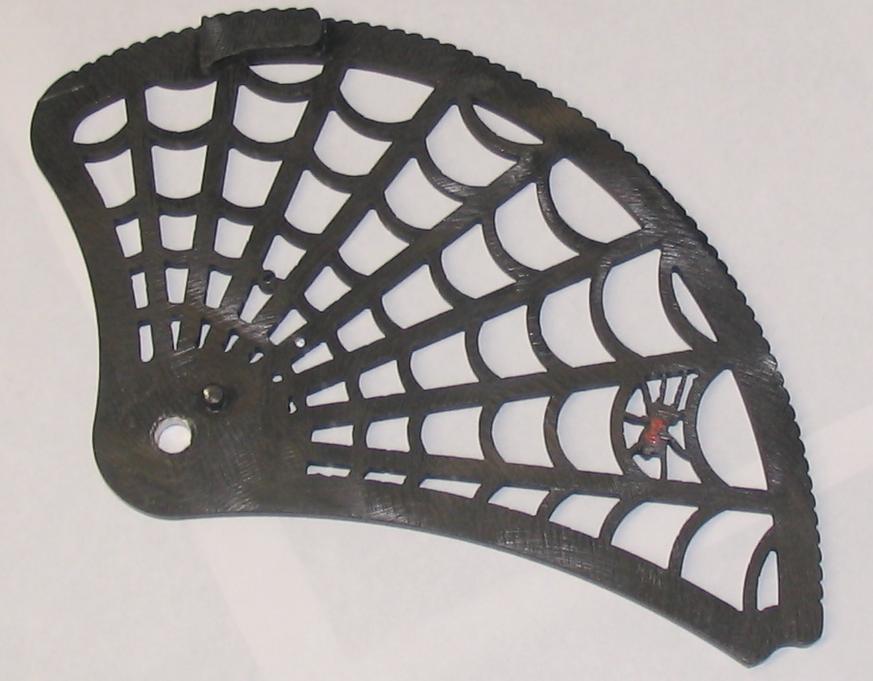In January of 2009 I went on to Rockclimbing.com to look up information on routes in the area. I stayed off the forums at that time for the most part because of all of the banter and bull shit that came along with the ability to anonymously post and in some cases borate other people. But while I was there, I saw that they were having a homemade cam competition. At this point I had made a few pieces of gear; I made a pair of crampons that were too thin to actually work, I made a set of ice tools that were so heavy my arms felt like Jello after every route and a few other here and there pieces. I had never even considered building a cam… until now.
I remember being asked once if I would ever build a cam back when I was still in college, my response was more of a “hell no” at that point. I didn’t have the confidence back then that I could design a piece of gear that I would trust my life to. But looking at the write up for this comp started the wheels turning. Here it was, all laid out, the most pertinent information needed to build it, then a guy that was going to pull test it to see how strong it was. This was a turning point in the way I thought about gear I could make.
When I was in college, I was working towards an engineering degree and before this I always thought that if I had finished my degree, I would learn the magic formula that would lead me to being able to design and build something like a cam, and in truth it would have. What I learned from this though was that I didn’t need the degree to be able to do the research and learn the necessary information to be able to still build the things I wanted to build. The internet has made information more accessible than it ever has been and through it I could find almost everything I needed to learn.
So here I was, half way through January and the dead line for submittal was the beginning of March. I not only had to design a cam but I also had to learn how to design and then build it in 6 weeks. Then certain decisions I made, like taking a week to have the lobes anodized, took away from this time. I managed to get my submission off in time but made several mistakes that led to the device failing at 7 kN, under half of what a commercial cam would hold. The failure didn’t come in the design of the lobes but the design of the shaft so the lobes where never fully tested.
This opened my eyes to a multitude of possibilities, however, on St Patrick’s Day 2010 I signed paper work with a guy named Patrick to buy the old rundown climbing gym in Grand Junction CO. The wheels didn’t stop turning but all of my energy went into turning the old gym around and build a community, which I was rather successful at but it meant other things got put on the back burner. I still designed and built some things like a low ropes coarse and a custom training room for climbing, but gear design was on hold for the most part. I still tried to build a porta ledge during this time but only got as far as buying a sewing machine and I never learned how to use it, I never even plugged it in till recently.
What this project did for me was to open my eyes to the possibilities of what I could do. I had been working as a welder and a machinist for 7 or 8 years at this point so I was pretty solid on how to build almost anything I could think up but this opened the door to things that I thought I couldn’t design. It taught me that I could research the information I was lacking and it taught me how to build a tester to be able to test the finish product. I bought two dynamometers and a pull back ram, I bought a 20 ton shop press and will be putting together a pull testing machine to test my work. These items are still in my storage waiting to be put to use.

How I built the cam
There are a number of resources online for how to do the math on a logarithmic spiral, the spiral that makes a cam work. I sat down with my now ex-wife and we took the formula and made an excel spread sheet that gave X and Y coordinates to layout the spiral. I then took these coordinates and laid them out in auto cad to get the outline of the spiral. From here I scaled the drawing to the size I wanted to make and started to design the inner space. I went with a spiderweb design because I thought it would look cool and give the cam a lot of strength. I then waterjet cut the lobes at work, at the time I worked at a welding shop that had a waterjet.

My original design used a U stem and I designed what I thought was a pretty sweet trigger but after I put it together, the cable I used was too soft to be able to pull the trigger. I redesigned it to use a stiffer U stem the was narrower and two side cables but in retrospect this design wasn’t all that practical. The time crunch made for some snappy decisions that really weren’t that great. The new design made for three pick points so I used a shoulder sling to pick up all three points and equalize them to add strength.
Ultimately the point of failure was on the axle shaft. To keep the lobes on the shaft I drilled and tapped into the end of the shaft so I could put machine screws in the ends. The point of failure was at the end of one of the machine screws where the axle was weekend by the drilled-out shaft. In retrospect this seems obvious but like I said, time crunch. Such an amazing experience and I’m so glad I participated. It changed my views on gear design and what I was capable of forever.

Trango sponsored the competition and it had two categories. A beauty pageant where the people of RC.com voted on which cam they thought was the best looking, and an overall where they devices were pull tested to destruction then ranked based on their performance. I won the beauty pageant but given the failure at 7 kN I lost the overall. In all honesty I’m glad I didn’t take it all away. The cam that won the overall was phenomenal and well deserving of the title. There were so many great cams in the comp and I was honored to compete against such an awesome field. The cam that got second in the beauty pageant would have definitely gotten my vote had I not competed and the cam that got third was a wooden cam with copper trim that didn’t stand a chance in the pull tester but sure was pretty. While RC.com is all but dead now you can still see the comp and results on the site.

The next year everything fell apart and the comp never happened again but it was a blast while it lasted. As I type this, I am in the process of designing some new cams. I have had many ideas over the years and I’ve even cut a couple of my designs that never got finished. At this point I’m going to take it back to basics and make a working model then start working on tricking it out and making it custom. I want to work on a tandem axel design and of course big gear! I’ll post up on the blog as I make them.




Awesome stuff! Mad respect for you mechanical engineer types.
Thanks Man